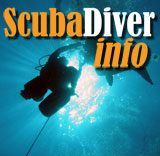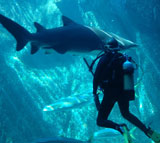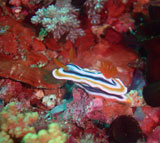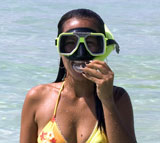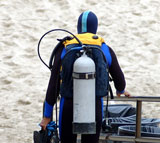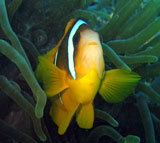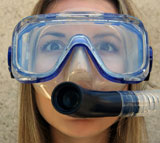Taking pictures underwater is a whole lot different from taking pictures on dry land. Everything's moving, constantly. Optics are different; things aren't as close as they appear to be. Light itself is different. There's less of it, and colors disappear the deeper you go. First red, then orange, then yellow, green and blue. And then there's the visibility. On land, that's hardly ever an issue. Underwater it's always an issue. What all of this means is that underwater you want to be as close to your subjects as possible. Problem is, with a standard camera lens, once you're close enough to a subject to get a decent picture, the subject often won't even fit into the picture. You can only see part of it. The solution? A wide angle or even fisheye lens. SeaLife now offers one, and it rocks.
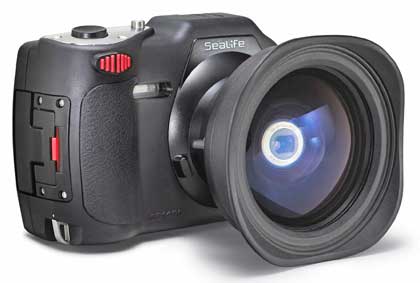
First, what's the difference between a wide angle and a fisheye lens? In the olden days before digital imaging, the standard focal length of 35mm film cameras was 36mm. Anything less than 36mm was considered wide angle, anything more than 36mm tele photo. With digital cameras things are different because unlike with film cameras where the film was always the same size, digicam imagers come in numerous sizes. So in an attempt to give customers an idea of the focal length (or focal range in cameras with an optical zoom), manufacturers usually provide a "35mm equivalent focal length." Using that method, wide angle usually means a focal length between about 20 and 28mm. "Fisheye" means an ultra wide angle lens with a focal length of around 16mm or less. This results in an extremely wide viewing angle. This way, you can get very close to a subject and still see the whole thing. On the negative side, extremely short focal length distorts the image and gives it a "fisheye" effect.
But if wide angle and fisheye lenses are such a good idea for underwater, why aren't all underwater cameras wide angle? Good question. It's because most underwater cameras are really cameras that were designed for use on dry land, but can also be used underwater. So the focal length range is geared towards land use. But then why not simply have a big zoom that goes from wide for underwater to long when it's needed above water? Because such zooms are expensive and it's not currently possible to make them bigger than about 5X while still fitting inside a compact camera such as the one SeaLife uses in its DC1400 system. Accessory lenses to the rescue.
Enter SeaLife's SL975 Fisheye Wide Angle Lens. It snaps onto the front of any DC series SeaLife camera housings. If used with a DC1400 (as of this writing the most recent and most advanced of the series), it increases the field of view by a stunning 80% over the already nicely wide 26mm lens starting point of the DC1400 camera. That changes everything.
The SeaLife SL975 Fisheye Wide Angle Lens
As is already obvious from the picture on top of this review, the SL975 is a substantial piece of equipment. At 13.8 ounces it weighs fully 2.5 times as much as the bare DC1400 camera itself. When used with the DC1400, it increases the field-of-view from 61 degrees to 111 degrees. When used with earlier SeaLife DC cameras, the increase in the field- of-view varies.
 How does one use the SL975? That takes a bit of doing. The package comes with a lens dock that attaches to the bottom of either the strobe or video light attachment base. It also comes with a neoprene lens cover and a retaining lanyard to make sure the very negatively buoyant fisheye lens won't get lost in the depths should it ever pop off the camera housing.
How does one use the SL975? That takes a bit of doing. The package comes with a lens dock that attaches to the bottom of either the strobe or video light attachment base. It also comes with a neoprene lens cover and a retaining lanyard to make sure the very negatively buoyant fisheye lens won't get lost in the depths should it ever pop off the camera housing.
The lens simply snaps onto the lens port of the housing. That can be done either on land before the dive, or in the water. I highly recommend doing it in the water so that no air bubbles will be trapped between the lens and the dome. The design is such that water freely enters to fill the space between the camera side of the SL975 and the glass of the dome.
How do you use the camera with the fisheye lens? No different from using the camera without it. Except that the focus MUST be set to macro or super-macro. MUST. It says so in large white lettering right on the bottom of the SL975. If you do not do that, pictures will not be in focus. I found that out the hard way (and wish the warning were printed on top of the lens as it's all too easy to forget).
Shooting with the big fisheye lens takes a bit of getting used to. The primary benefit, of course, is that you simply get a whole lot more into the picture when you shoot from up close. You capture the whole critter and not just part. You can get close enough so that water clarity becomes much less of an issue. But that's only part of the fun. As you become more familiar with the lens, you'll learn to hunt for special angles that really make the fisheye lens shine. You learn how to illuminate your subject with the strobe and/or video light and make it blossom in glorious color while the background attractively fades away. Photographing wrecks is always a challenge because they are so big, but with the fisheye you can sometimes capture a whole wreck in one shot. The possibilities are endless.
Below are some of the pictures we shot with the SeaLife DC1400/SL975 combo in Roatan, Honduras:
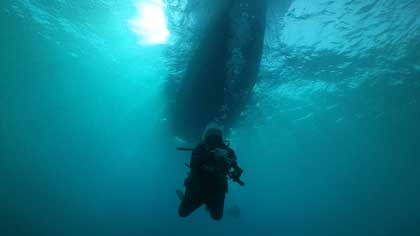
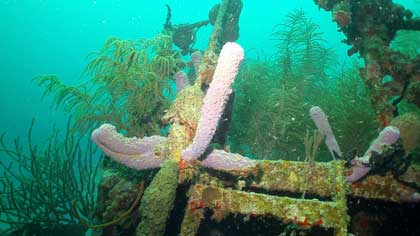
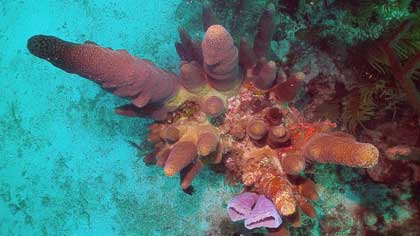
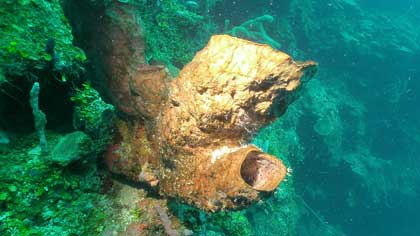
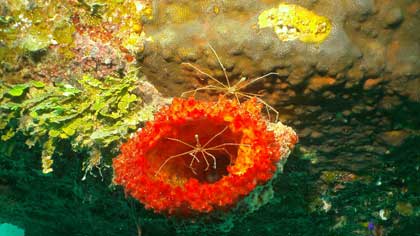
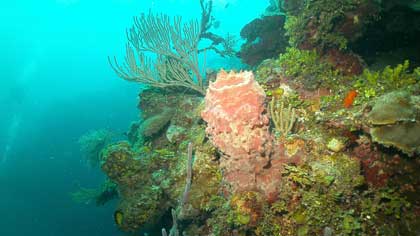
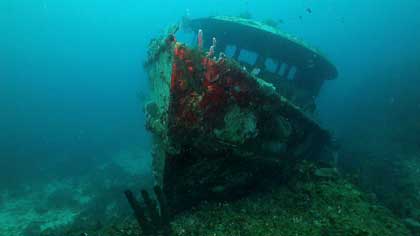
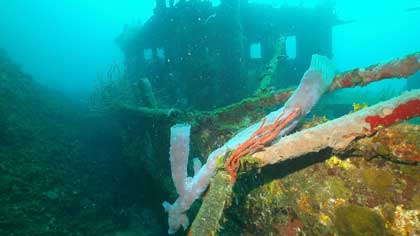
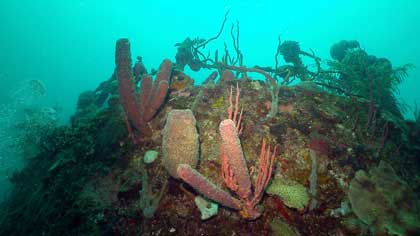
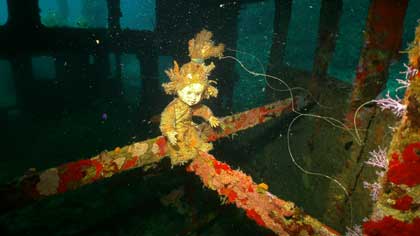
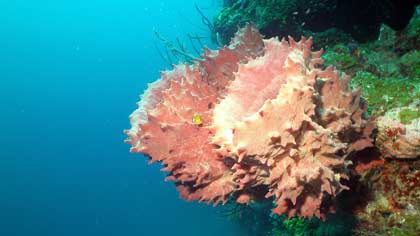
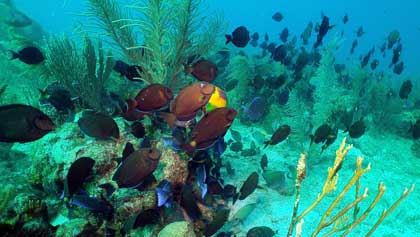
Shooting with the SeaLife SL975 Fisheye Wide Angle lens
Any underwater photographer knows that getting good pictures down there is a lot more challenging than coming up with decent shots on dry land. So divers, even those who are experienced photographers, need all the help they can get. SeaLife's new fisheye lens, introduced in November of 2012, is an almost surefire way to score eyecatching shots.
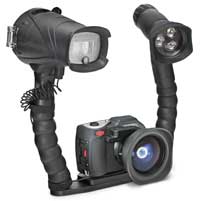 While fairly large and heavy, the lens is simple to use and install. The 16mm focal length (in 35mm equivalence terms) is wide enough to dramatically increase what fits into a picture, yet not so wide as to introduce excessive fisheye distortion. And since you can get so much closer, varying water clarity becomes less of an issue.
While fairly large and heavy, the lens is simple to use and install. The 16mm focal length (in 35mm equivalence terms) is wide enough to dramatically increase what fits into a picture, yet not so wide as to introduce excessive fisheye distortion. And since you can get so much closer, varying water clarity becomes less of an issue.
Use of a strobe and/or video light is recommended under all but the most perfect lighting conditions. Bringing out the foreground color can make for stunning compositions. Note, though, that since you can get so much closer with the fisheye lens, even the lowest strobe setting can be too much. Experimentation is key.
The SeaLife Fisheye Wide Angle Lens lists for US$299.95. That's not inexpensive, but considering how much it can add to the enjoyment of any SeaLife camera setup, and also to the much increased variety and quality of pictures, it's a bargain and highly recommended.
We like:
- Adds 16mm equivalent wide angle shooting capability when you need/want it
- Very solid and of high quality
- Let's you get much closer to subjects
- Snaps on and off on land or underwater
- Can produce stunning images
- Comes with lens dock and retaining lanyard
- No special settings needed
Keep in mind:
- Camera MUST be in macro or super-macro
- Lens is large and heavy
- Lens dock attaches to bottom of flash tray, but not bare camera housing
- Lowest flash setting may still be too strong
